Springtime, when the azaleas, the camellias, and the magnolias are in full bloom; the pristine beaches are still deserted, the temperature is milder, and the prices are still “off season”, is an ideal time to visit the coastal Carolinas and northern Florida.
NORTH CAROLINA
The Outer Banks, that long strip of sand, eroding, amassing, and slip sliding with every storm is awesome indeed, especially on windy days! Cape Hatteras which protrudes farther to the southeast than any other part of the US is a land of dramatic scenery—filled with lighthouses and islands to visit.
Today, the Outer Banks, in the northeast corner of North Carolina, still attracts hand gliders, parasailers, and kite fliers, but because of its bodies of water–primarily the Albermarle and Pamlico Sounds—canoers and kayakers, sailors and surfers, hikers and birders gravitate to the area.
While the Outer Banks has a limited gay scene (the hub of LGBT activity being concentrated in the research triangle of Durham, Raleigh, and Chapel Hill), there is a live and let live mentality. The people here are cool; after all same-sex marriage is legal, and all of the innkeepers mentioned in this article welcome destination weddings. Some even have their own wedding officiants!
Less than 8 hours from NYC, in wind-swept Nag’s Head, lies the tiny town of Kitty Hawk, NC, where the Wright brothers took their 12 second flight (visit the Wright Brothers National Memorial: nps.gov/wrbr.com).
Perched in an idyllic natural setting is the romantic three guest room Cypress Moon Inn (cypressmooninn.com). With its giant porch facing the Albermarle Sound, this coastal Carolina house, built by its innkeeper, a master carpenter, affords a glimpse of Outer Banks life before it was overrun by hotels and motels. So serene that it seems remote, the Cypress Moon Inn is really only a minute away from the major highway leading to restaurants, shops, and nature reserves. Hosts Greg and Linda Hamby will regale you with facts and descriptions of the numerous nearby attractions as they serve an ample and delicious breakfast of fruit, muffins, scones, egg tortillas—all with Starbucks coffee!
A great bet for live music, wine, and terrific food (check out the dozen meaty oysters for only $5.95), Kelly’s Outer Banks Restaurant & Tavern (kellysrestaurant.com) will even give you the recipe for their signature sweet potato biscuits.
Pea Island (fws.gov/peaisland) is a national wildlife refuge in the northern reach of Hatteras Island, and a wonderful place to see migratory fowl.
As you travel south, you’ll pass numerous mini beach towns until you get to Pamlico Sound and its eponymous inn and gourmet restaurant (InnOnPamlicoSound.com), owned and operated by displaced northerner Steve Nelson, who is so PC that he welcomes “same-gender weddings”. In fact, his classy boutique hotel right on the sound, in Buxton, NC can host up to 60 guests. All 12 spacious rooms offer breathtaking views of Pamlico Sound. All guests are treated to a complimentary snack basket, afternoon freshly baked goods, and soft drinks. Coffee, teas, and fruit as well as Wi-Fi is available throughout the day. When you’re not taking in the view or relishing the complimentary three course breakfast, burn some calories by borrowing their kayaks and bicycles, or stand-up paddle and boogie boards.
Venturing further south to the tip of Hatteras Island, you’ll take the free 45 minute ferry to isolated Okracoke Island with its startling landscape, foreboding lighthouse, and the best sunsets one can ever imagine. It’s a great place to camp too, if you are so inclined. But if you’re up for more ferry riding (two and a half hours’ worth), hop the one to Cedar Island (ncdot.org/transit/ferry), a lovely fishing village with a gorgeous beach where horses roam, and rare birds visit.
Going further south still on the NC coast, you’ll encounter the postcard pretty little port of Beaufort, which Travel & Leisure has called “the most romantic city in America”. Beaufort is so tiny, it does not even have a beach, but a ferry will transport you from the port to an island beach. Concentrated on Front St (their main street), are numerous fine restaurants, craft, and artisanal shops—all with NY prices, as well as the not to be missed Maritime Museum (ah.dcr.state.nc.us/sections/maritime). And around the corner you’ll find the beautiful Old Burying Ground, a small picturesque cemetery with a Gothic feel.
Only a block from the waterfront lies the 3 guest room Ann Street Inn (annstreetinn.com), a beautifully restored 1832 home. The inn is set in a relaxing garden with a pond and peaceful porches with rocking chairs. The affable innkeeper, Donna Babington, entertains guests with amusing stories over delicious home-made, gourmet breakfasts (she bought the inn after consuming two bottles of wine). Her sense of humor is displayed all over the house with pillows & signs indicating “It’s 5 o’clock somewhere”; “What happens on the porch, stays on the porch”, and “Dear Santa…I can explain…”
SOUTH CAROLINA
Myrtle Beach
As the good book says, “The West has Las Vegas, Florida has Orlando, and South Carolina has Myrtle Beach”. Would you believe that this sprawling beach resort, more Coney Island than the hospitable South, is the number one travel destination in the state? In fact, it boasts even more visitors than Charleston or Hilton Head.
While there is no history here, you’ll find a miniature golf course on almost every block, many theme parks and golf courses, and over 2,000 restaurants. What redeems Myrtle Beach from ultimate tackiness is its 60 miles of beautiful shore line. You’ll especially appreciate the boardwalk, a fun meandering 1.2 mile jaunt from Second Ave to Fourteenth Avenue, a section of which even offers a peaceful respite from the more commercial areas.
For a fun night time activity go to a Shag club, like Ducks, Fat Harold or the OD Pavilion, where the Shag was supposed to have been born. This smooth laid back happy dance, a courting ritual really, descended from the Charleston in the 1930s and 40s.
For shopping outside of the usual tourist schlock try Broadway on the Beach, a complex with tons of quirky boutiques such as Retroactive, and Sugar.
As for lodging, a breath of fresh air comes in the secluded Spanish mission style Serendipity Inn (serendipityinn.com). Consisting of 17 rooms and suites, this elegant family owned and operated B&B seems light years away from the typical Myrtle sprawl. With a pool and hot tub in the middle of the courtyard, shuffle board and ping pong, it has the feel of a country inn, yet it is so centrally located that you can walk, not only to the beach a block away, but to fine restaurants, shopping and the myriad attractions of Myrtle Beach.
Charleston
Charleston is the largest original colonial city in the US. An enclave of cobble stone streets, horse drawn carriages and gorgeous mansions, this smallish city is inimitable in its abundance of Southern charm and elegance, nouvelle and low country cuisine and antebellum architecture. No wonder Travel & Leisure magazine named it the top US city of 2011, unseating San Francisco. This “most mannerly city in America” can be done on foot, by DASH (the free trolley), by horse drawn carriage, or by bus – but no matter how you explore the city, you will inevitably be swept up in its penchant for hedonism. From its favoring strong drinks and serious food, to its dancing and living it up. After all, this is the city that gave birth to the Charleston!
Perhaps the best way to explore the city is through Charleston Strolls (charlestonstrolls.com), where Charleston history comes to life in a fascinating tour filled with stories that reveal the city’s colorful past. You’ll visit the Battery and the waterfront with its view of Charleston harbor and Fort Sumter where the Civil War began, Rainbow Row, the French Quarter, the Four Corners of Law, and “Catfish Roe” the setting for the Gershwins’ Porgy and Bess.
All of the elements of Charleston’s musical stew, are featured in the weekly 90 minute “Sounds of Charleston” (soundofcharleston.com). From gospel to Gershwin, light classics to jazz, the listener is treated to the sounds that define Charleston’s charm and hospitality. It all takes place at the Circular Congregational Church, right on Meeting Street in the center of town. This must see weekly introduction to Charleston’s musical past is educational, entertaining and emotional at once.
If you only have time for one museum in Charleston, make it the Old Slave Mart Museum (oldslavemart.org), where in the mid 1800s, slave traders came to “buy” and “sell” enslaved people of African descent. Here you’ll hear their stories as well as those of the slave owners and traders.
When it comes to shopping, the centrally located Old City Market is part kitschy tourist trap, part glimpse into the old South, and part community meeting place. Buy your Gullah sweetgrass baskets, Jerusalem artichoke relishes, and tie dye T-shirts, knowing that you are supporting local culture. King Street, on the other hand, is a bustling Mecca of big name shops, and if you happen to be there on a Saturday, you can partake of the farmers’ market.
In the spring, the Spoleto Festival (spoletousa.org), the premier cultural event in the Southeast, showcases international actors, musicians, singers, dancers and artists in various places throughout the city. Do not miss it, if you’re in town during the festival.
Also not to be missed is a tour of the gorgeous campus of America’s first municipal college: The College of Charleston (cofc.edu), founded in 1770. You’ll enjoy getting lost in its Victorian buildings and moss draped campus. Download a self guided video on your iPhone.
Charleston is a foodie capital. From the near impossible to get into Fig (Food Is Good), to Hanks, a perennial seafood favorite, to Hominy Grill, a low country kitchen featuring such Charleston delicacies as She Crab soup, you will not go wrong dining practically anywhere in Charleston.
By deep South standards, Charleston has its share of LGBT clubs, most of which are found in the center King Street area. Check out the hip Club Pantheon with drag shows on Friday and Sunday nights, or Dudley’s a few doors down, which offers a quiet respite from the thumping and bumping at Pantheon. Vickery’s Bar & Grill (vickerysbarandgrill.com), is also quite popular with the LGBT crowd.
Because of its great weather and soft sea breeze, Charleston is an outdoor town. You’ll have your choice of the nearby beaches of Folly and Isle of Palms, Kiawah, or Sullivan’s Islands, where there is also kayaking, fishing and boating. In Charleston proper you can play golf or tennis, hike, bike, or bird watch at numerous preserves.
Charleston hospitality sets the bar high. A prime example of that bar is the trio of romantic inns, all centrally located on and off Meeting Street: The Meeting Street Inn, The Indigo Inn, and the 1843 Greek Revival mansion, Jasmine Inn. Furnished in period antiques with lush courtyards and fountains, the three inns collectively house 118 luxurious guest rooms. Tariff at all three includes a deluxe continental breakfast, and a luxurious wine and cheese reception every afternoon from 5-6:30, Wi-Fi, four poster beds, and some rooms even come with fireplaces and patios. More importantly, the hosts will stop at nothing to make your experience in Charleston a memorable one: from the in-house wedding officiant, Allen Johnson, to the free shuttle bus to restaurants, to pulling whatever strings are necessary to get you a table at the restaurant or your choice, to escorting you to insider places a traveler would typically never get to. The three inns, all owned by the same family, typify Charleston’s tradition of gracious Southern hospitality. You really feel like you’ve been transported back through centuries.
Magnolia Plantation
A side trip from Charleston is to take a daylong outing to the magnificent Magnolia Plantation (magnoliaplantation.com). Dating back to the 1680s, it claims to be the first and oldest public garden in the US. In the spring, the myriad variety of camellias and azaleas are blooming, lending the entire grounds a magical feel. At the plantation, you can take a nature train tour, a house tour, a boat tour, a self-guided walking tour and a tour of the slave quarters. There is also a petting zoo and a nature center in these 500 acres of gardens and grounds, making it also an ideal venue for biking while spotting abundant wild life on the marshes, ponds, forests and mounds: alligators, turtles, herons, egrets, etc.
In the auditorium, there is also a very informative film about the history of the famed mansion, once a rice plantation worked by slaves and which made its owners very, very rich.
St. Helena Island
An important specialty van tour run by Seretha Tuttle and the other women of the Tuttle family, the Gullah ‘n’ Geechie Mahn Tours (gullahngeechietours.net), focuses on the rich Gullah history and culture of St Helena Island, a 50 acre national historic landmark site, including the Penn Center. It was here that in 1862, a group of abolitionist Quakers from Philadelphia came to teach recently freed slaves and their children. Given the secluded nature of the island, it makes sense that the Reverend Martin Luther King would retreat here in order to rekindle his thinking and to write. Past the Penn Center, on the left, lie the ancient tabby ruins of the Chapel of Ease, destroyed by forest fires in the 1800s.
Gullah is a West African based system of tradition, customs and beliefs, art and family life. Descendants of the Gullah (people from Angola and Sierra Leone) still speak the Kriol language. A typical Gullah phrase is “We glad fa see onah” or “last night I had a long eye, dry long so just because” means “my eyes were bigger than my belly”. On that note, do dine if you can, at Gullah Grub and order their hop n jon with field peas and red rice.
What is obvious in St. Helena is the matriarchal culture that still exists in the lives of the 11,000 inhabitants, most descendants of the original 10,000 Gullah slaves. You attend the church that your mother attends, live in clusters in a closed community where respect for the mother and elders is prime. And you continue the traditions such as not putting your purse on the ground, lest you lose your money.
FLORIDA
Jacksonville and St. Augustine
Jacksonville (the largest city in Florida, geographically) is a vibrant Northeast Florida destination, an inspiriting coastal retreat teaming with sandy beaches, exciting cultural attractions (the Comer Museum of Art & Gardens) and outdoor activities like Caddy Shack Ranch Wild Life Sanctuary, the zoo, and the splendid old mansions of the Riverside/Avondale historic district. A sense of freedom permeates the Jacksonville beaches, the warm weather and tropical landscape beckon. After all isn’t Florida all about sunshine, happiness and relaxation? Because of its proximity to Amelia Island/Fernandina Beach to the north and St Augustine to the South, Jax (for short) makes for an ideal jumping off spot.
The gay friendly one Ocean Resort & Spa (oneoceanresort.com) is an artful destination where each one of the 193 spacious rooms face or front the sweeping white sands and rolling waves of the Atlantic Ocean. This luxury ocean front resort is nestled in the picturesque Atlantic Beach town center which lures passers-by with its cobblestone streets featuring an eclectic mix of shops, restaurants, art galleries, ice cream parlors and night life.
One Ocean is a “green” hotel with 24/7 one touch concierge service, allowing for pampering to the extreme. Built in the 1970s, it prides itself on its friendly and courteous staff, which at the touch of a button come to the rescue: to press or steam your clothes or to replenish (free) snacks in the refrigerator. Morning coffee and newspaper of your choice is delivered daily to your room, at no extra cost.
While, for the most part, the food in Jax does not come close to that of its northern rivals, in Charleston and Savannah, Azurea, the restaurant at One Ocean is a gourmand’s feast.
Jax is home to the sprawling campus of the University of North Florida (UNF), which doubles as the city’s hub of culture, politics, and sports. It is also the center of LGBT activity, even organizing Gay Pride during the second and third weeks in October.
Indeed, there are ample gay resources to keep a lesbian happy in a city which is more Southern Georgia than Florida. The city’s oldest gay bar is Bo’s Coral Reef, a Jax Beach institution since 1964, when Bo, an aging lesbian back then, quietly opened it near her home. Today, the sprawling nightclub/restaurant prominently features her portrait at the entrance of its new location (201 Fifth Ave North). While Bo’s is a mixed bar, The Norm (2952 Old Roosevelt Blvd) is a Karaoke bar that “Out in the City” pens “the best place to meet women”. Cross The Norm and dance at Metro (859 Willow Branch Ave), a lively multi-level nightclub with a drag cabaret, dance floor, and Tiki bar.
If camp is what you’re after, Hamburger Mary’s has opened an offshoot on 3333 Beach Blvd. Orsay and 13 Gypsies also feed a large gay clientele.
St. Augustine
Fifty four miles south of Jacksonville lies the “Oldest City in America”; the “Oldest Port in the US”. Founded by Ponce de Leon in 1565, St. Augustine is 12 square miles you’ll either fight for or want to flee from—as quickly as you possibly can!
On the plus side, St. Augustine blends exotic Spanish architecture with Native American cultures. Here you’ll explore centuries of architecture, quaint cobblestone streets, and beautiful beaches, waterways, and estuaries. History buffs should not miss the fort at Castillo de San Marcos, or the Colonial Quarter which draws art lovers to its splendid Lightner Museum. Do take the Flagler Legacy Tour which takes you back to the gilded age when railroad magnate Henry Flagler built Flagler College for the era’s richest Americans. You’ll also see the largest collection of Tiffany stained glass windows still in its original use.
With its coquina buildings and sprawling moss draped live oaks, all of St. Augustine is really concentrated in the historic district consisting of St George St, King St, and Aviles St. Along with the town’s numerous attractions, these 3 streets house its restaurants and shops, all of which you can see on foot, by trolley, train, or horse drawn carriage. But in addition to sightseeing, imbibing, and indulging in gastronomic pleasures, you can also golf, fish, kayak, surf, and jet ski.
On the other hand, the oldest city in America, can also be perceived as a honky tonk town; the epitome of kitsch. Think Times Square just before curtain time: thousands of tourists, drink or food in hand, concentrated in a 3 block radius, blocking the road as they blankly gaze at something or other, oblivious to all of the other people in the street. You’ll battle the crowds as you try to escape them waiting on line for Ripley’s Believe it or Not Museum, traipse through the Colonial Quarter which, along with transporting you through St Augustine’s 450 years of rich history, will encourage you to shoot muskets, or climb the watchtower overlooking pirate ships. And if you’re still not overwhelmed by the tackiness of it all, you can visit the Authentic (sic) Old Jail, or stop by the Fountain of Youth which Ponce de Leon is said to have discovered, and which changes location every time the rent is raised!
Despite all of this, or perhaps because of it, St. Augustine is a trove of LGBT resources and attractions. If you’re planning on getting hitched in Florida (and now, since January 5, 2015, we can!) there’s All About Events (4549 St. Augustine Rd), which will make your wedding an event to remember. So will Coastal Coordinating Weddings and Events and Goddess Wedding Ceremonies (both at 128 San Marco Ave), where an “all accepting and loving” interfaith minister, will happily officiate.
Off the beaten track in a quiet residential neighborhood surrounded by live oaks, but still within walking distance to the center of town, is the sweet gay owned and lesbian run Saragossa Inn. Its 2 guests suites and 4 guest rooms have private entrances and baths. Owners Gibbs Moore and Chuck Dunster have created a charming and romantic, quaint and comfortable, relaxing and revitalizing home away from home. The women staffers serve a yummy southern breakfast. An additional perk of staying at the Saragossa, is that you can leave your car in their backyard lot, as you explore St. Augustine.
The Kenwood Inn is another LGBT lovers’ paradise which will go out of their way to put cut fresh roses in your room, arrange for a carriage ride through downtown, or schedule a couples massage.
And there is also the Victorian House B & B, at 11 Cadiz St.
Gay friendly bars and restaurants include Cellar 6, Tini Martini Bar, and the St George Tavern.
But in this town, whose primary industry is to serve tourists, no one much cares who you are, how you dress, or whom you love. That’s the beauty of St. Augustine. And its shortcoming as well!

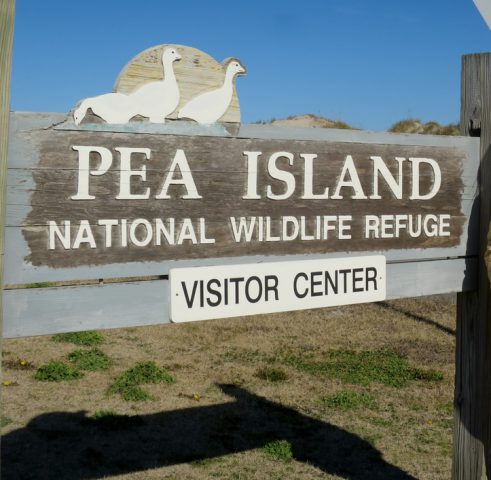
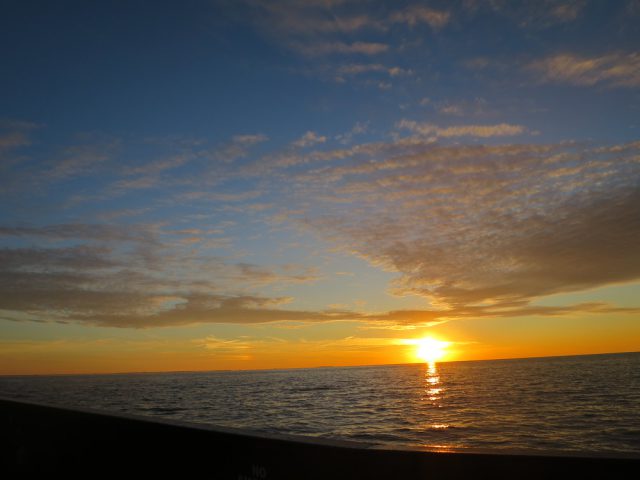
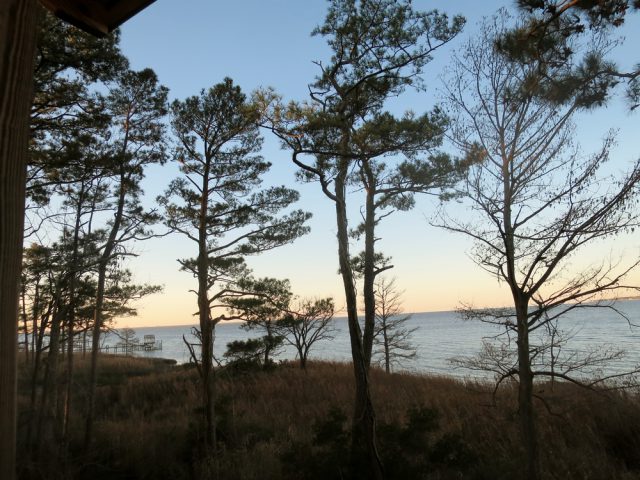


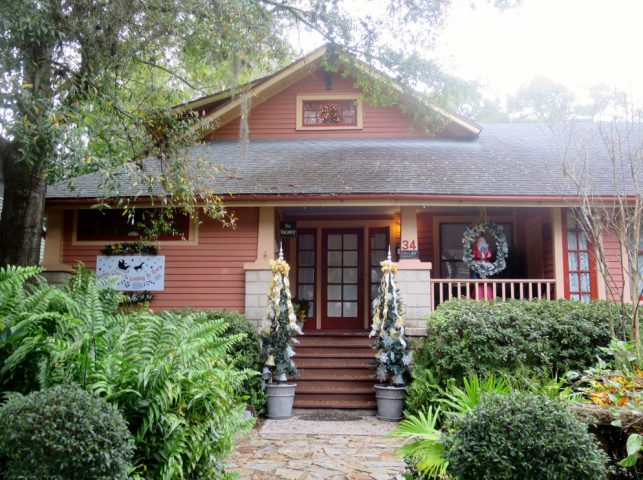
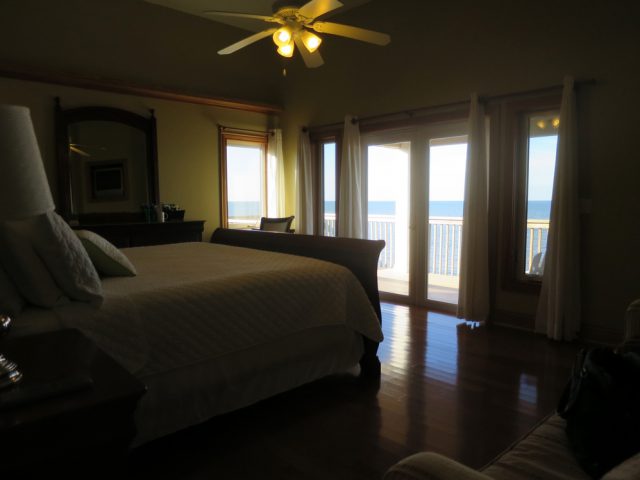
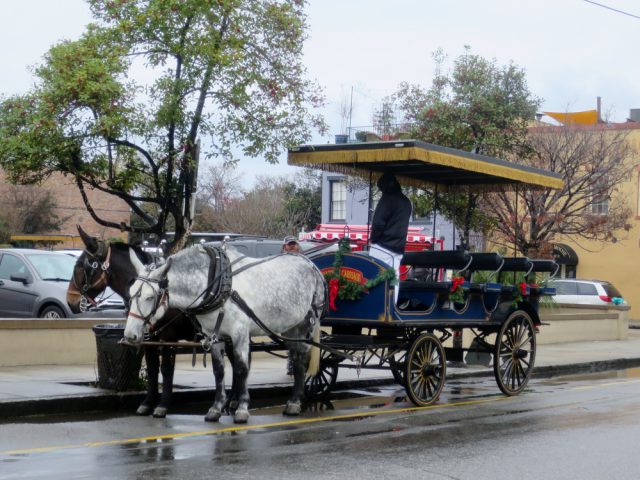
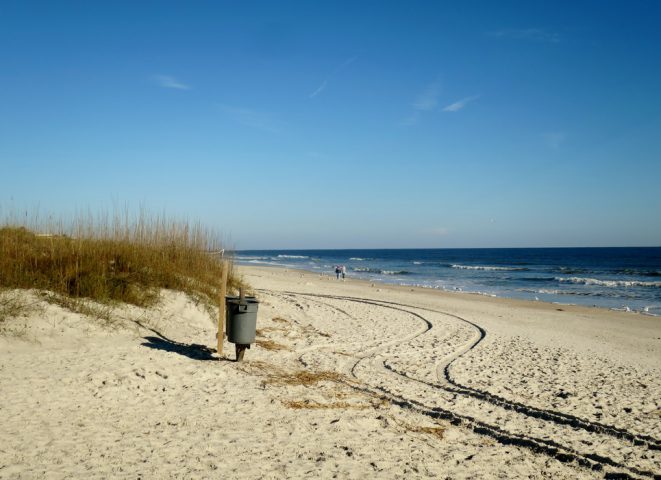
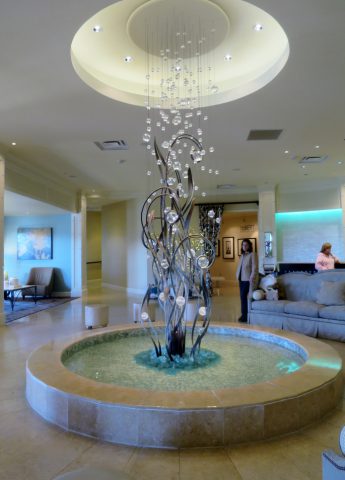

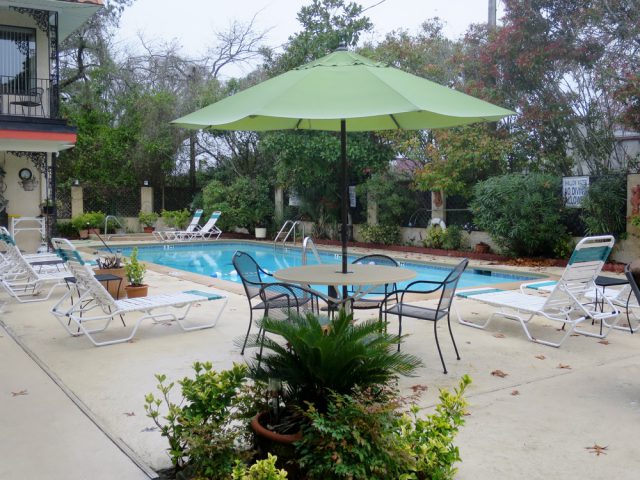
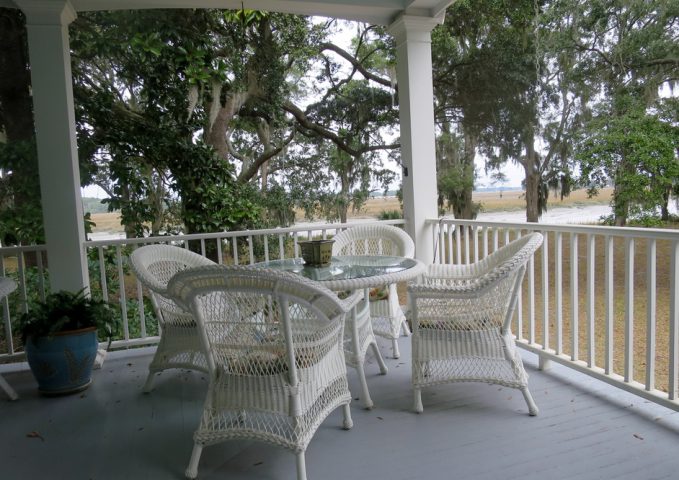
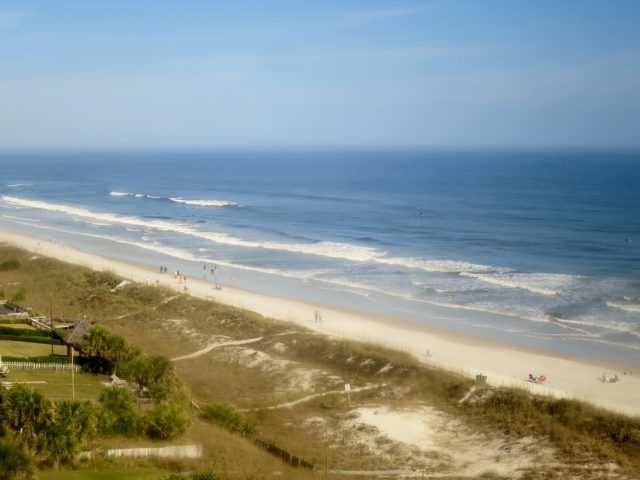
What Do You Think?